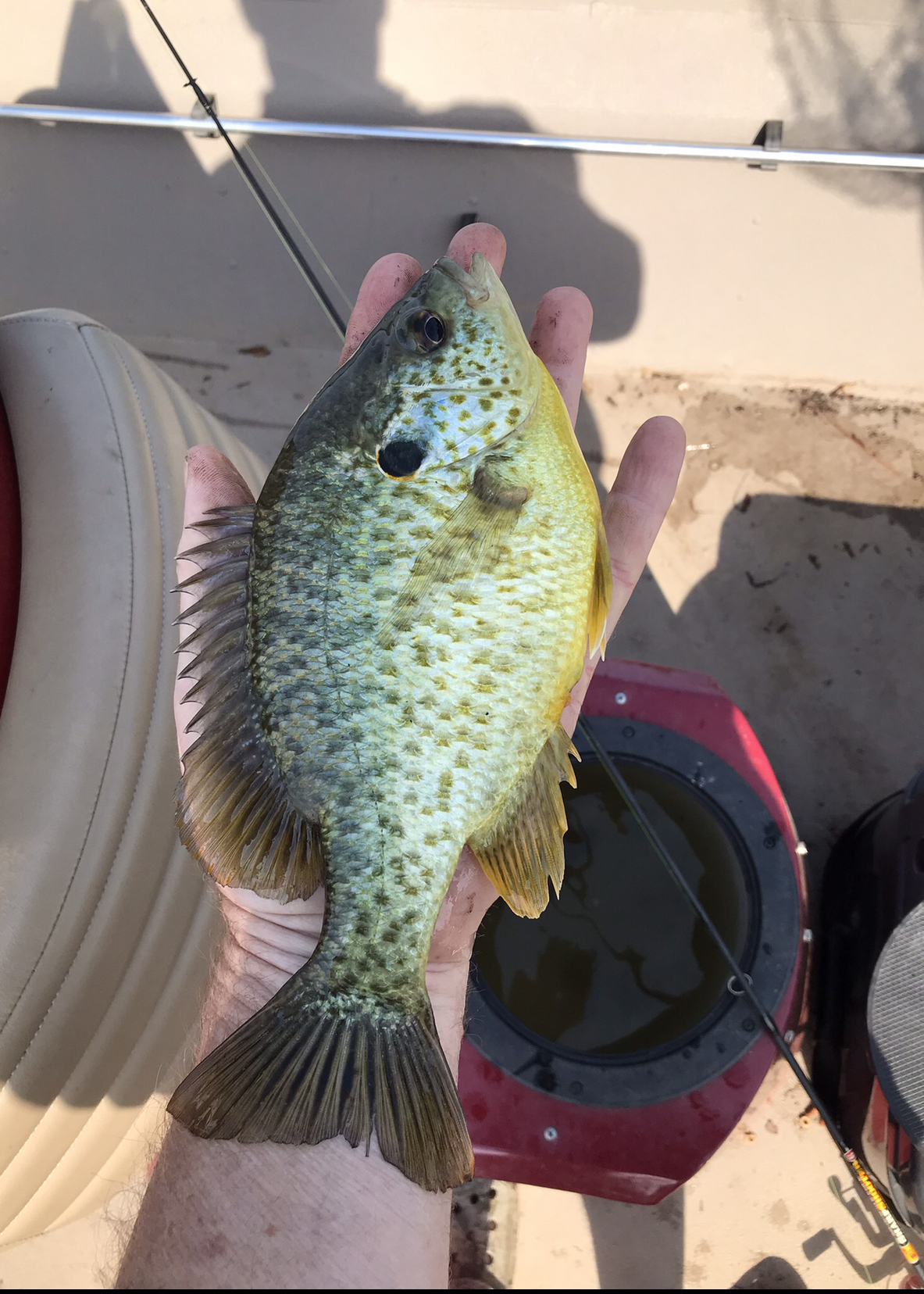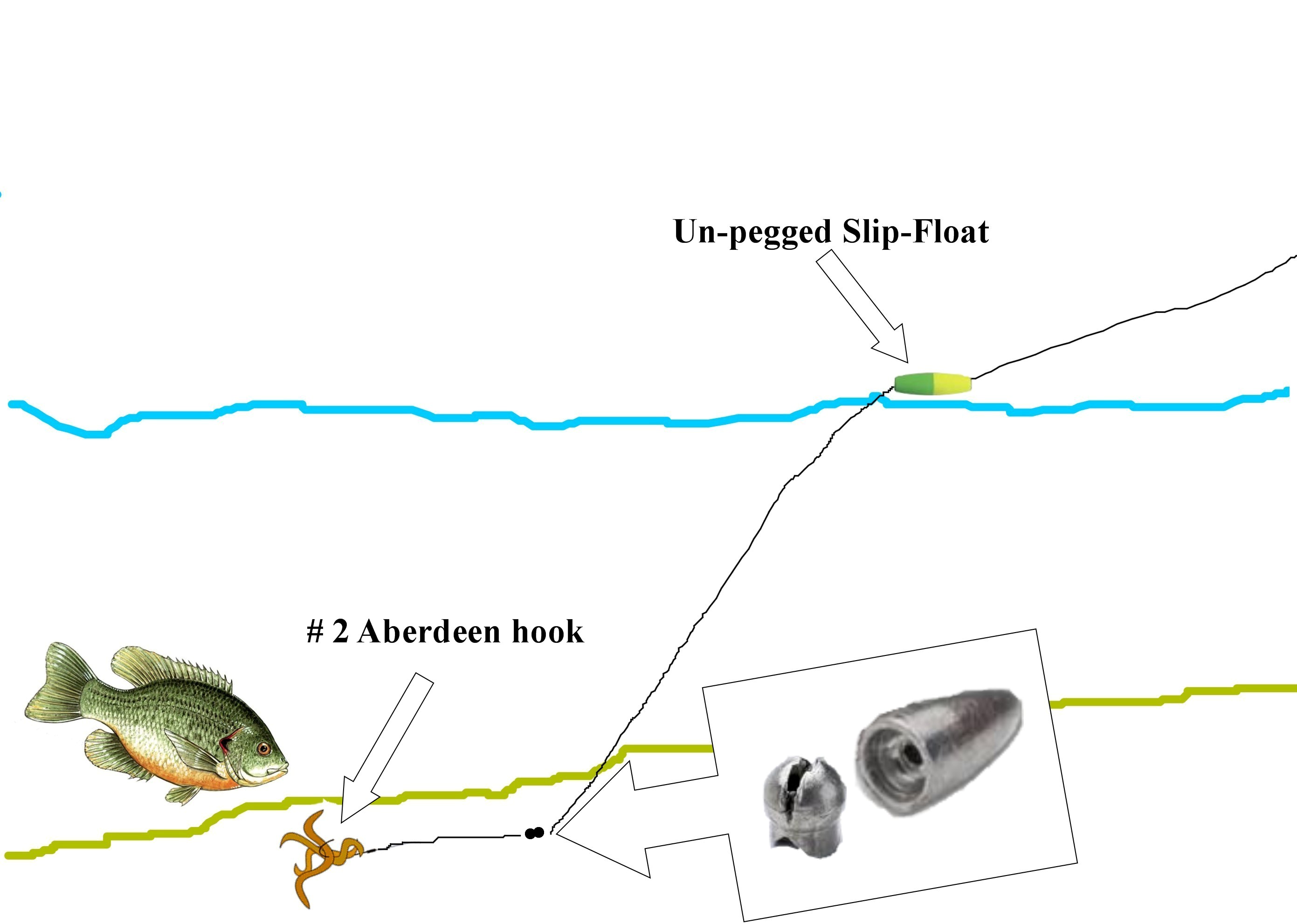Phillip Gentry
As far as panfish go, shellcrackers, formally known as redear sunfish and colloquially know as Chinquapins in some parts, often fly under the radar behind crappie and bluegills. Some anglers don’t make much distinction between shellcrackers and other sunfish species, including bluegills, and just refer to them collectively as bream. Spend a little time with a dedicated shellcracker angler and you’ll start to understand that this is a very unique panfish species.

In areas and lakes where shellcrackers are present, most anglers understand that these feisty fish spawn earlier, usually during the month of April, sometimes a whole month ahead of other sunfish species.
Because the shellcracker is often lumped together with bluegills, many anglers fish for the two species the same way. It’s hard to argue with a guy positioned on top of a shellcracker bed, pulling them in left and right using a cricket under a cork, but generally speaking, he’s not catching the best fish he could be catching. Shellcrackers on the bed will protect their nests from anything that invades their space.
Due to their dietary preferences, shellcrackers feed on the bottom. Number one on the list is freshwater mussels which they often root up using their slightly conical snout, then inhale and crush with the hardened area inside their mouths. Shellcrackers also eat aquatic worms and invertebrates such as crawfish. A whole nightcrawler or 2 – 3 redworms is a very common and readily available bait in most locations.
Shellcrackers have a tendency to spawn in slightly deeper and more open or distinctive areas than bluegills, although in some lakes the two species will spawn in the same areas. Look for areas of loosely packed bottom. Sand and mud are OK so long as the mud is not too silty. Like bluegills, they wallow out nests on the bottom to spawn.
A good indicator that an area is conducive to shellcrackers is the presence of mussel shells washed up on the shoreline, the more shells the better.
While males are more territorial, females will move in and out of spawning areas and heavily feed near these areas while spawning. In order to target these more elusive and generally larger shellcrackers, a tactic of catfishing proportions is effective. The angler motors into a likely area, anchors the boat, then fan casts multiple lines around the boat. Conventional anchoring will work, but shellcracker fishing is a great place to use those automatic poling anchors if you’re boat is equipped with them.
Because prime shellcracker bedding and staging grounds often have rocks, logs, or stumps nearby, slide a 1/8 oz bullet weight ahead of a split shot when creating your shellcracker rig. The bullet weight will fend off some of the hang-ups that occur when you’re reeling line back in or the fish is moving off with the bait.
Read More: HOW TO WORK A GLIDE BAIT
When shallow water fishing for shellcrackers, particularly females that are not guarding a specific nest, fish tend to grab the bait and move away from where the bait landed. Line watching is a good way to detect a bite but to assist with that, slide a small, 2-inch crappie float on the line ahead of both weights. Ordinarily, panfish anglers will peg the cork when fishing for bluegills but leave the peg out for shellcracker. When a shellcracker picks up the bait and heads straight back to the boat it’s sometimes hard to tell without the cork. If the cork starts moving rapidly in any direction, you know he’s got it and can set the hook.
The cork not only acts as a strike indicator, but with the line laying across structure and the weight on the bottom on the other side, the cork will keep the line from sinking and possibly getting tangled in the structure.

Depending on the area of the country you’re fishing, shellcrackers can weigh as much as 3 or 4 pounds but the average good fish for most parts of the country will be in the 10 – 12 inch range and weigh somewhere around a pound. For this size quarry, either ultra light or light action spin or spincast tackle works fine but it’s often wise to beef your monofilament line up to 8 – 10 pound test. Shellcrackers aren’t line shy and the larger line strength will help you land the occasional catfish or largemouth bass that comes along.
Another good tip is to carry along a large supply of #2 gold Aberdeen hooks when shellcracker fishing. Even with the cork/strike indicator, many times the fish will swallow both the bait and the hook before you know it. It’s better to just cut the line and leave the hook in place. Fish will stay alive in the livewell with the hook in place and even fish that are to be released have a higher survival rate by allowing the hook to loosen and fall out or rust out compared to trying to dig the hook out.
At the end of the day, shellcrackers present a challenge that all panfish anglers will appreciate, incorporating aspects of crappie, catfish and bluegill fishing that fits neatly into the spring fishing timetable.


























